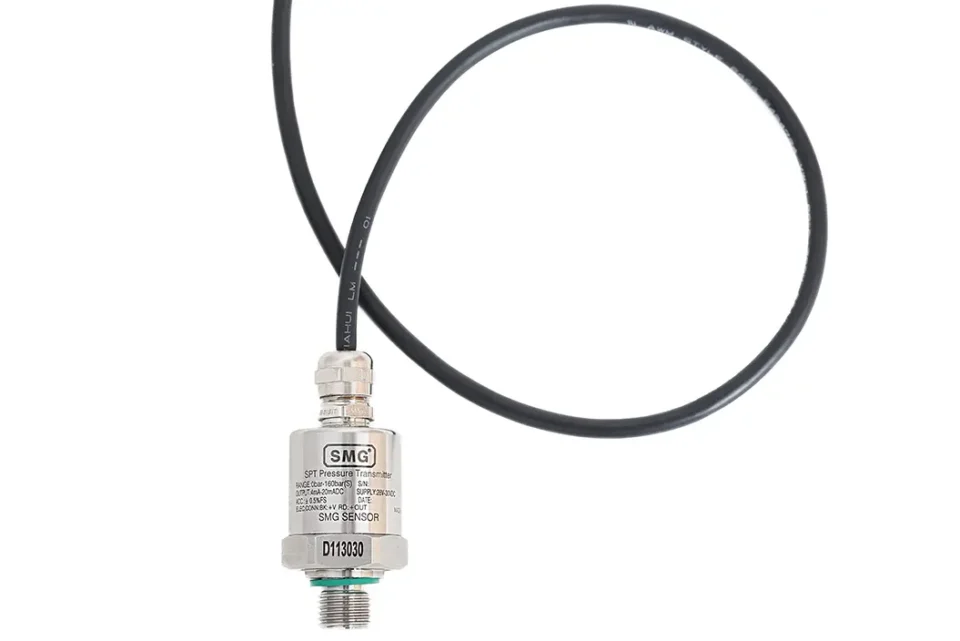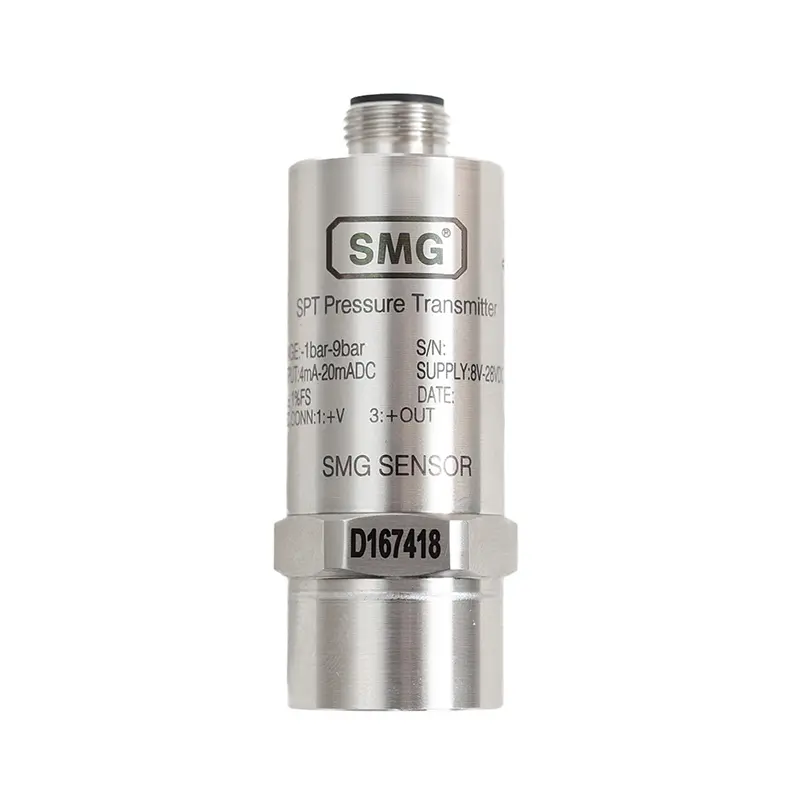Industrial pressure transmitters
Pressure transmitters are essential components in process control systems. These devices measure the pressure of gases, liquids or steam and convert it into a reliable electrical signal, enabling accurate monitoring and control – even in demanding environments. Thanks to built-in temperature compensation and linear correction, pressure transmitters deliver dependable readings across a wide range of conditions.
Product summary
- Precise pressure readings for gases, liquids, and steam
- Enhances efficiency and reliability
- Enables early fault detection
- Durable in harsh environments
- Easy integration with control systems
How pressure transmitters work
Pressure transmitters function through a carefully structured, multi-stage process that ensures accurate and stable signal transmission:
- Sensor element – This component detects the applied pressure and converts it into a raw electrical signal. The sensor technology used (e.g. piezoresistive, capacitive, or strain gauge) depends on the application and required performance.
- Transducer – The transducer converts the raw electrical signal from the sensor element into a usable format, typically in the form of a low-level electrical signal.
- Transmitter – The transmitter takes the low-level signal from the transducer and amplifies it, converting it into a standardized, higher-level output (such as 4–20 mA, 0–10 V, or a digital protocol like HART), making it suitable for transmission over long distances.
- Signal conditioning and transmission – Finally, the signal is conditioned (filtered, calibrated, and adjusted) to ensure accuracy, then transmitted to control systems like PLCs (Programmable Logic Controllers) or DCS (Distributed Control Systems) for monitoring and process control.
This precise sequence allows pressure transmitters to provide stable, real-time feedback — even in harsh or dynamic industrial environments.
Transducer vs. transmitter – what’s the difference?
Although the terms are often used interchangeably, transducers and transmitters perform distinct roles within a pressure sensing system:
- A transducer converts a physical variable (such as pressure or temperature) into a low-level analog electrical signal (typically in the millivolt range).
- A transmitter amplifies and standardizes this low-level signal, enabling long-distance transmission to control systems (such as 1–5 V or 4–20 mA outputs).
This distinction ensures that both the sensor and transmitter contribute to a reliable, effective measurement and transmission process.
Applications of pressure transmitters
Pressure transmitters are widely used wherever pressure monitoring is critical to process stability and safety. Common industries include:
Industrial automation and process control
Used to monitor and regulate fluid and gas pressures in automated systems for consistent product quality and efficiency.
Oil and gas industry
Essential for monitoring well pressure, pipelines, and refining processes in high-pressure, corrosive environments.
Water and wastewater treatment
Used to control pumps, tank levels, and filtration systems to ensure steady flow and prevent overpressure.
HVAC systems
Monitor air and refrigerant pressure to optimize climate control and system efficiency.
Aerospace
Used in fuel, cabin, and hydraulic systems where weight, accuracy, and reliability are critical.

Precision and Quality with SMG
Founded in 1990, SMG has built a strong reputation as a trusted manufacturer of high-quality sensors, precision resistors, and industrial heaters. With over 30 years of experience and technical know-how, SMG continues to deliver innovative and dependable solutions for industrial applications.
SMG also offers custom solutions thanks to flexible production capabilities and in-house engineering support. This makes their transmitters ideal for OEMs, machine builders, and system integrators who need reliability and tailored performance.
As an official distributor, Kamet is ready to support you in selecting the right pressure transmitter for your application.

Specifications and physical properties
Our SMG’s industrial pressure transmitters are engineered for accurate and stable pressure measurement, even in the most demanding environments. To ensure reliable and accurate pressure monitoring across a wide range of industrial applications, our pressure transmitter offer a carefully designed set of features and configurable specifications:
- The transmitter is available in multiple pressure ranges (0–50 to 0–1000 bar), with other custom ranges possible upon request.
- Output signals can be configured to industry-standard formats such as 4–20 mA or 0–10 V, enabling seamless integration into existing control systems.
- Various process connection options are offered, including G1/4, G3/8, and G1/2, to suit different installation needs.
- The sensing element is constructed from stainless steel for durability and compatibility with aggressive media.
- Temperature compensation and linear correction are built in to ensure stability and accuracy across a wide temperature span (up to 120°C optional).
- The transmitter housing meets IP65 or optional IP68 standards, providing resistance to dust and moisture in challenging environments.
- It is tested across all production stages—including aging screening—to ensure consistent, high-quality performance.
These combined features result in a compact, cost-effective, and robust transmitter ideal for applications in water treatment, building automation, compressors, and refrigeration systems.
Reach out to us to discuss your specific needs
Contact our team today, and we help you in selecting the best products for your requirements.
